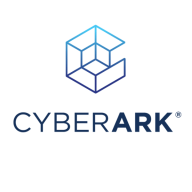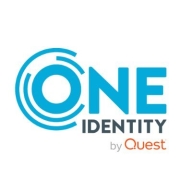

Find out what your peers are saying about CyberArk, Delinea, One Identity and others in Privileged Access Management (PAM).
The return on investment lies in improved security infrastructure, addressing over-privileged access, and reducing the risk of credential compromise, which is a major source of data breaches.
During our quantitative analysis, we estimated potential savings of one to ten million dollars a year by using a PAM solution.
With other tools such as Okta where you have self-service for resetting your own passwords and things like that, the average savings is 12 minutes, which is six dollars for a password reset, and you can extrapolate that over your organization.
The return on investment in compliance is clear because inadequate identity management can result in substantial financial penalties for data breaches.
CyberArk has been exceptional in coming back to us with immediate responses.
It could be forever until you talk to someone who knows what they are doing.
They are helpful, but complex issues can take a long time to resolve, which can delay solutions for urgent customer issues.
If I raised a request while they were active, I received responses within an hour.
Their support, in general, is useless most of the time.
It could take a day or some hours depending on the case or the customer.
The CPM can reportedly handle up to 50,000 accounts independently without issue.
I would rate it a ten out of ten for scalability.
They had 40,000 passwords in this one safe, and it was saving the last ten iterations of each password object. That means they had 400,000 password objects in this safe. They exceeded the limit.
We could handle about 1,00,000 records for different users.
We are hosting it centrally in Switzerland.
Proper fine-tuning and expertise ensure the product performs well.
Overall, the stability of the solution is high.
It has a large customer base and positive feedback within my network.
I would rate it a nine out of ten for stability.
Specifically affecting the test and development environments, not the production environment.
They want everything to be on the cloud, but even in the SaaS version of CyberArk Privileged Access Manager, they need to deploy some servers on-premises.
We cannot generate a plug-in for web-based applications.
If they want clients to move to the cloud, they need to support them in real-time.
This lack of 24-hour support is problematic from a testing and development standpoint.
In terms of providing a single platform for enterprise-level administration and governance of users, data, and privileged accounts, One Identity is not yet there.
One Identity Manager needs better documentation and more examples, especially for beginners, as it has a steep learning curve.
CyberArk is expensive compared to other products I know.
CyberArk is comparatively expensive compared to other PAM solutions, such as Delinea, especially during renewal.
CyberArk's SaaS solution is particularly expensive.
On-premises might incur higher costs.
On-premises, it is cheap.
The pricing is reasonable compared to other solutions.
CyberArk Privileged Access Manager helps ensure data privacy because we now know who is using which credentials and at what time.
It keeps a record of activities, allowing me to easily fetch screen recordings to detect any misuse and see who did what and what happened.
It can integrate with Splunk, SNMP, and other solutions and technologies.
It ensures high security through multiple approval processes, preventing unauthorized access and enhancing compliance by providing time-based access for privileged accounts with proper audit trails.
It continuously monitors user behavior in real-time, triggering automated responses, and manages secure access for both on-premises and cloud applications using protocols such as SAML.
The best feature of this solution is its flexibility to be customized.


CyberArk Privileged Access Manager is a next-generation solution that allows users to secure both their applications and their confidential corporate information. It is extremely flexible and can be implemented across a variety of environments. This program runs with equal efficiency in a fully cloud-based, hybrid, or on-premises environment. Users can now protect their critical infrastructure and access it in any way that best meets their needs.
CyberArk Privileged Access Manager possesses a simplified and unified user interface. Users are able to manage the solution from one place. The UI allows users to view and manage all of the information and controls that administrators need to be able to easily access. Very often, management UIs do not have all of the controls and information streamlined in a single location. This platform provides a level of visibility that ensures users will be able to view all of their system’s most critical information at any time that they wish.
Benefits of CyberArk Privileged Access Manager
Some of CyberArk Privileged Access Manager’s benefits include:
Reviews from Real Users
CyberArk Privileged Access Manager’s software stands out among its competitors for one very fundamental reason. CyberArk Privileged Access Manager is an all-in-one solution. Users are given the ability to accomplish with a single platform what might usually only be accomplished with multiple solutions.
PeerSpot users note the truly all-in-one nature of this solution. Mateusz K., IT Manager at a financial services firm, wrote, "It improves security in our company. We have more than 10,000 accounts that we manage in CyberArk. We use these accounts for SQLs, Windows Server, and Unix. Therefore, keeping these passwords up-to-date in another solution or software would be impossible. Now, we have some sort of a platform to manage passwords, distribute the inflow, and manage IT teams as well as making regular changes to it according to the internal security policies in our bank."
Hichem T.-B., CDO & Co-Founder at ELYTIK, noted that “This is a complete solution that can detect cyber attacks well. I have found the proxy features most valuable for fast password web access.”
One Identity Manager is a value-added and trusted active directory management and user provisioning software solution. One Identity Manager administers and protects an organization’s data and users, minimizes threats, and ensures that compliance regulations are consistently satisfied.
Users will have access to the data and applications they need when they need them. One Identity can be used on premises, in the cloud, and also with hybrid options. One Identity Manager is able to easily combine strict governance compliance regulations and rigorous security protocols to keep business enterprises secure and functional today and into the future. One Identity Manager is also a robust, scalable identity governance and administration (IGA) solution. The solution is designed to meet the changing needs of a growing dynamic business enterprise, and not be limited or left vulnerable by IT department constricts.
One Identity consistently provides robust security solutions that facilitate a strong secure enterprise where the users, applications, and critical data are safe and secure. The unified identity security platform provides identity governance and administration (IGA), privileged access management (PAM), active directory management and security (ADMS), and identity and access management (IAM) processes to ensure an aggressive stance on security for today’s dynamic enterprise organizations.
One Identity is used by more than 11,000 organizations worldwide managing over five hundred million plus identities.
One Identity Manager Features
Reviews from Real Users
“The initial setup process for an employee is straightforward. We set up processes for user accounts and we can add other processes to them. Our goal is to automate all user-permission and user-administration processes with One Identity and we are doing that more and more.” - Marc H., IT Architect at a tech services company
“The most valuable features are that it has a lot of capabilities, can integrate with a lot of systems, including automated onboarding like CyberArk, and allows you to integrate different entities.” - Security Consultant at a financial services firm
We monitor all Privileged Access Management (PAM) reviews to prevent fraudulent reviews and keep review quality high. We do not post reviews by company employees or direct competitors. We validate each review for authenticity via cross-reference with LinkedIn, and personal follow-up with the reviewer when necessary.